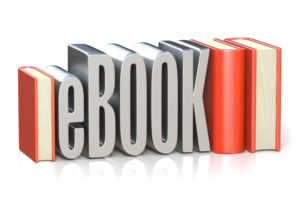
Are you ready to publish your first e-book?
How hard can it be?
That’s what we thought.
First the Good News.
- You don’t need to purchase an ISBN, unlike a paperback or hardcover. The publisher, such as Amazon, assigns a product number, and you’re ready to go.
- The cover design can be less expensive as it doesn’t need to be in a high-quality printable format, so there’s no back cover or spine to worry about. You should use the recommended pixel size from the publisher. Some are strict, and others will be more flexible in their specifications.
- Once published, if you find mistakes, you can republish, upload an improved cover, or take the book offline.
- You can publish on multiple sites. I recommend the ones we’re on, but we kept it simple in the beginning by choosing Amazon. They are the largest, but everyone is there. You will need to get on all the big sites to increase your sales. Barnes and Noble has been our best-producing sales channel, but that varies among authors.
- Many sites offer a limited time of free offerings to get started. No one knows who you are, and it’s a way for you to build an audience.
The Bad News.
- You will need to be able to navigate the formatting and uploading. You most likely wrote your book in MS Word, but Word doesn’t run on a Kindle. The most common is EPUB, but Amazon has its own proprietary format called KPF, or Kindle Package File. For MAC users, there’s a direct publishing route for the iPad and iPhone, but getting your book on Amazon could be challenging. I also wouldn’t recommend using PDF because of its reflowing limitations. Use the format the publishers want, and your reader will be happy. We offer this as a service because it’s such a hassle. There is a learning curve if you go it alone.
- Expect to give up 30% of your sales to the retailer, or more in some cases. Each publisher has its specific schedule of charges. I suggest you learn the details on what to expect.
Selling Your Book is a Business.
You will need a bank account to give to the publishers for royalties. I recommend starting an LLC, but it’s not mandatory. You can use a personal checking account but keep an accurate ledger of your revenues and costs because you will need to file a Schedule C with your regular 1040 tax return to report the income. The good news, if you lost money, it could lower your overall taxes. You are a publishing company when you publish an e-book regardless of your tax filing status.
What Will You Make?
I would like to be more encouraging here, but the average e-book novel produces enough per week for the author to purchase a cup of coffee on Saturday morning when they go to the local coffee house to write. If you’re selling your book for $2.99 expect to get around $2 per sale and sell around one book per week when you first start. Nonfiction books are better revenue generators if they cover a hot topic such as a diet fad, but they are more expensive to write and edit. You should write what you like, even if it’s a saturated market. The murder mystery category is probably the most saturated market, but I have a current series going anyway. . . because.
Keep Going
Winston Churchill said, “When you’re going through hell, keep going.” The more books you write, the more you become known, and the higher the resellers will rank you on their sites. If you have a five-book series and you sell the first book, you often sell the next four. There are binge readers out there who will purchase the first book in your series and then the rest. The resellers give you the tracking dashboard, and it’s fun watching your audience grow. Readers like a series because the characters are familiar. If they like the writing in the first book, they’ll know what they are getting in the second.